
Review on Unleash Your Attraction with MIKEDE Magnetic Neodymium Magnets! by Will Rahman

Understanding TENSILE STRENGTH AND PARALLEL POSITION is key when choosing a magnet.
This is the second set of these magnetic hooks that I have purchased (from a different seller). They are versatile, strong for their small size (1/2 inch diameter) and will easily hold light curtains and poles to metal doors. not doing what is expected. Simply put, a magnet's ATTRACTIVE FORCE (in kilograms or pounds) measures the amount of VERTICAL force required to pull the magnet away from the metal surface to which it is attached, allowing each of them to be taped to a metal CEILING for maximum holding power of approximately 22 lbs/10 kg before RELEASING from the CEILING (assuming all other factors are ideal). Take the same magnetic hook and place it on the WALL is made of exactly the same material as the ceiling and it slides down the wall much easier than coming off the ceiling. The same concept explains why 2 magnets stick together. It's easier to separate them if you SHARE them than if you try to PULL them. Manufacturers usually refer to REMOVING FORCE when specifying a magnet's holding capacity. Clamping force is determined by the MAXIMUM WEIGHT the magnet will hold DURING IDEAL TESTING. The PARALLEL HOLDING/SHEARING FORCE can reasonably be estimated to be between 10% and 25% of the magnet's PULLING FORCE. With this in mind, we assume a 15% PARALLEL POSITION for these 22lb rated hooks (22lb x 15% = 3.3lb). Based on this assumption, we can expect each hook (when used on a metal wall or door) to hold about 3 to 3 1/2 pounds of weight before sliding down the wall. Obviously that's a lot less than the 22 pounds it needs to hold when used on a ceiling. As the magnet fails at a lighter weight when used on a wall than when used on a ceiling, this does not mean that the magnet is defective, it merely shows in real life (and possibly to the dismay of the user) the difference in ATTRACTION STRENGTH of the magnet (in this case 22 lbs) compared to its PARALLEL HOLD/SHEAR (approximately 2 1/4 to 5 1/2 lbs or 10 to 25% of 22 lbs). In addition to orientation, there are other factors or conditions that affect a magnet's properties and weaken its strength, such as: B.: ** Magnet material (alloy, ceramic, metal) and its condition (chips, cracks, scratches, etc.), its size and shape. Magnet "curved" or not? (Bowl = Fits in a steel cup or holder like the magnets on these hooks. The cup shape concentrates the magnet's attractive force in one direction {open end of cup}, increasing its holding power.) If the magnet has been stored properly (important), it has been dropped it? (falling magnet = not good)** What about the metal surface the magnet is attached to? How thick is the metal? (thicker = better) what is the TYPE of metal, what are its components? Is the metal BARE and CLEAN or is it coated, painted, dirty, greasy, rusty? Is the surface of the metal perfectly FLAT or domed or uneven, perfectly SMOOTH or textured, rough, uneven, dented, chipped? ANYTHING THAT PREVENTS FULL AND DIRECT CONTACT BETWEEN THE MAGNET AND THE METAL 100% will reduce the performance/strength of the magnet.** What are the environmental conditions - is there moisture present? What is the ambient temperature and humidity? What is the surface temperature of the magnet? ** and much more. I think the physics of magnets and magnetism is fascinating, but technical and complex enough to knock MY brains out of a science book! Luckily for most of us "average consumers" this BASIC understanding of PULLING FORCE in relation to PARALLEL HOLD is probably the most helpful (and easiest to remember) when choosing a magnet for the home, craft, hobby or business for our task.
- Industrial & Scientific
- No power
New products
Comments (0)
Top products in 🪝 Hooks
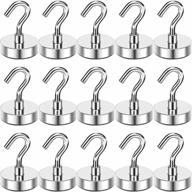
25Lbs Heavy Duty Neodymium Magnetic Hooks, 15Pcs Cruise Essentials Hanging Magnets For Refrigerator, Kitchen, Home & Workplace By MIKEDE

31 Review
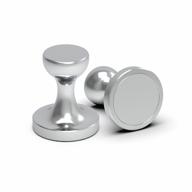
Organize Your Space With MHDMAG Heavy Duty Coat Magnetic Hooks - Rare Earth Neodymium Magnets For Home & Office - Pack Of Two.

35 Review
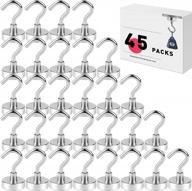
45 Pack LOVIMAG Neodymium Strong Magnetic Hooks - 25Lbs Rare Earth Magnets Heavy Duty For Refrigerator, Ceiling Hanging, Cruise, Curtain & Kitchen!

34 Review
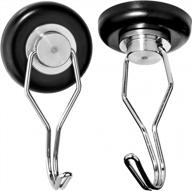
Mavoro Strong Magnetic Hooks For Hanging. Up To 65 Lbs. Set Of 2 Black Magnet Hooks Heavy Duty Magnets, Neodymium 52 Rare Earth Magnets. Rotating Swivel Style Magnet Hook For Refrigerator, Locker Etc

35 Review
Another interesting products
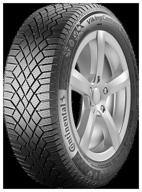
Continental ContiVikingContact 7 195/65 R15 95T winter

21 Review

🧼 Efficient Cleaning with Canplas 193064 Flush Cleanout - 4 Inch Diameter

9 Review
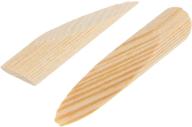
🔌 Enhance your Woodworking Projects with KREG P PIN Solid Wood Pocket Hole Plugs

8 Review
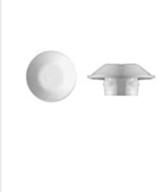
High-Quality White Plastic Flush Type Plugs for Industrial Hardware Applications

9 Review

